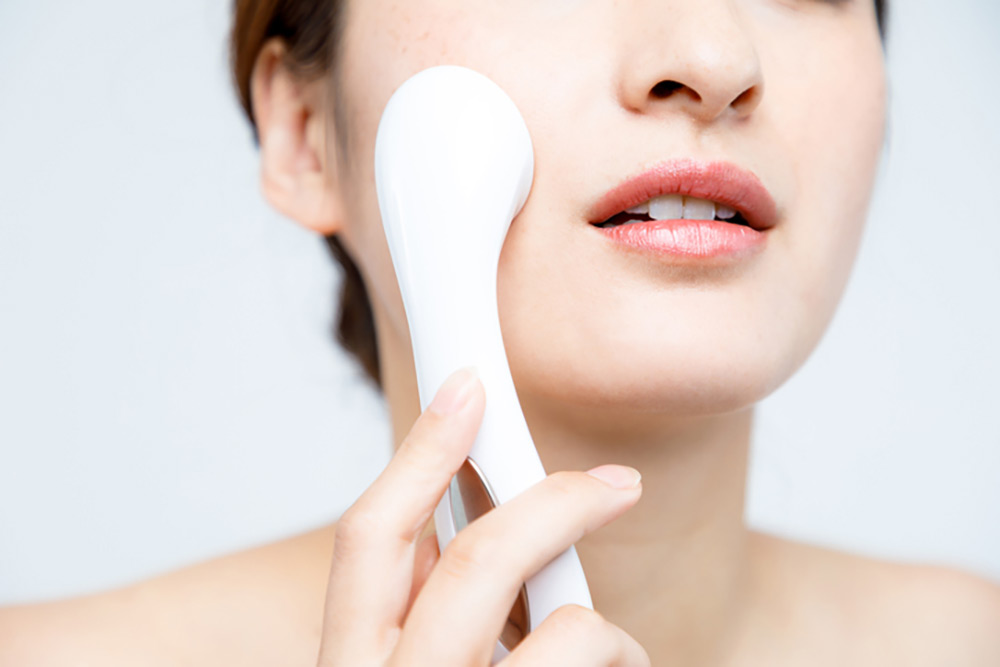By Valerie Monroe
If you’re interested in feeling happier about your appearance—especially as you age—you might like reading what she has to say about it. For more of her philosophical and practical advice, subscribe for free to How Not to F*ck Up Your Face at valeriemonroe.substack.com
YOU GUYS keep asking about all different kinds of at-home devices marketed for skin tightening, lifting, and clarity. In my recent post about NuFACE, HNTFUYF DermDiva Heidi Waldorf pretty much debunked the aura around that device—but soon after, a reader asked about ZIIP, a device that uses a different kind of technology. Did that one work? How about LYMA? And Solawave?
When I read your emails about at-home devices, all I want to tell you is to save your money. And if you’re intent on buying one, to lower your expectations.
How low?
“At-home devices may be worthwhile if you’re committed to using them regularly,” said Waldorf. But any improvements you may notice will be small and incremental. If you have moderate to severe sun damage or laxity, an at-home device isn’t going to help, she said.
Here’s my question to you, friends: Who among us—except for gorgeous E. Jean Carroll, who at 79 seems to have lived her entire life under a dense forest canopy and has the flawless skin to prove it—doesn’t have moderate sun damage? And who over the age of, I don’t know, 60, doesn’t have some laxity?
“I’d also skip in-office spa-level procedures like glycolic peels and hydrafacials,” said Waldorf. “Though they’re effective at smoothing and brightening, if you’re looking for some tightening without downtime, you need a more powerful treatment, like ultrasound with Sofwave or radiofrequency with Thermage,” she said. An in-office procedure may cost more, but will provide more reliable results. Even if you have lesser, more moderate concerns, results will be faster in-office.
The LYMA starter kit costs approximately $2,700 plus $149/month for the accompanying “oxygen mist and glide” for maximum results, which comes to an additional $1,788/year. On the other hand, one in-office Sofwave or Fraxel treatment costs between $1,500 and $4,500, depending on the areas treated and where you live.
What is the great allure of these at-home devices? I think using them gives us a sense of control—a sense that even if we can’t afford pricey in-office procedures, even if we can’t compete with the people we see on social media getting them, we at least can have something. But the something we get is practically . . . nothing.
Waldorf’s bottom-line: If you have a fixed budget for aesthetics, save your money for a more effective procedure. My bottom-line: The people at ZIIP sent me one of their devices to try. It sits on my countertop because I don’t have time for it right now—and when will I? If I choose to pop for an in-office procedure, I make sure I understand the likelihood of seeing an appreciable difference afterward. When a doctor says, “It’s not predictable” (as many results are), I skip it. (And I keep in mind that, as one dermatologist told me, the less a device has to do, the better it works.) Personally, I’ve liked the results of radio-frequency microneedling; I’m not sure I’ve seen tightening, but the clarity of my complexion seems revived. Which, I am unashamed to admit, I enjoy.
Does that make me vain? I guess it does. Are you? A reader nearing 70 recently said she’s decided to own her feelings of vanity. Such a good idea. Her comment reminded me that vanity is a slippery slope for women, and it helps to understand why. I wrote something about that for O, The Oprah Magazine years ago and I thought you might like to see it:
…feelings of inadequacy, the striving for perfection, the competing, the comparing—with others or with younger versions of ourselves—is all a fool’s game. No one ever wins, not even the most conventionally beautiful. As Rita Freedman, PhD, clinical psychologist and author of Bodylove, points out, if you think you’re not pretty, you spend your life regretting that, and if you think you are, you spend your life in fear of losing your looks. Then one day, you do lose them. (You want something to cry about? We’ll give you something to cry about!)
We’re not supposed to be excessively concerned with the way we look; it’s unseemly, prideful, immodest, vain. Vanity stems from competitiveness, says Freedman; it even suggests evil impulses (Mirror, mirror, on the wall . . . ). But here’s the rub: As women, our sense of self is inextricably bound up in our appearance, and so we tread a very fine line between concern and overconcern or obsession. Freedman reports that in a classic research study, psychotherapists were asked to rate the personality traits of a healthy woman, a healthy man, and a healthy person. “Preoccupation with appearance” (vanity) was rated normal for a healthy woman but abnormal for a healthy man and for healthy people. That leaves us stuck in a damned if we do, damned if we don’t dilemma, she points out: aware that we’re judged by our attractiveness but ashamed to admit how deeply we value looking good, because that would mean we’re . . . vain.
This must be the post about bottom-lines, because here’s a final one: If you find yourself defending your choices about how you confront (or not) your appearance issues—assuming you have any—give yourself a break.
Tired of thinking about the baggage under your eyes? Let it go!
Slipping under the knife? It’s your body!
Deciding to fall in love with your face? Huzzah, about time!
Beauty culture is not often kind. But you can be. xo


